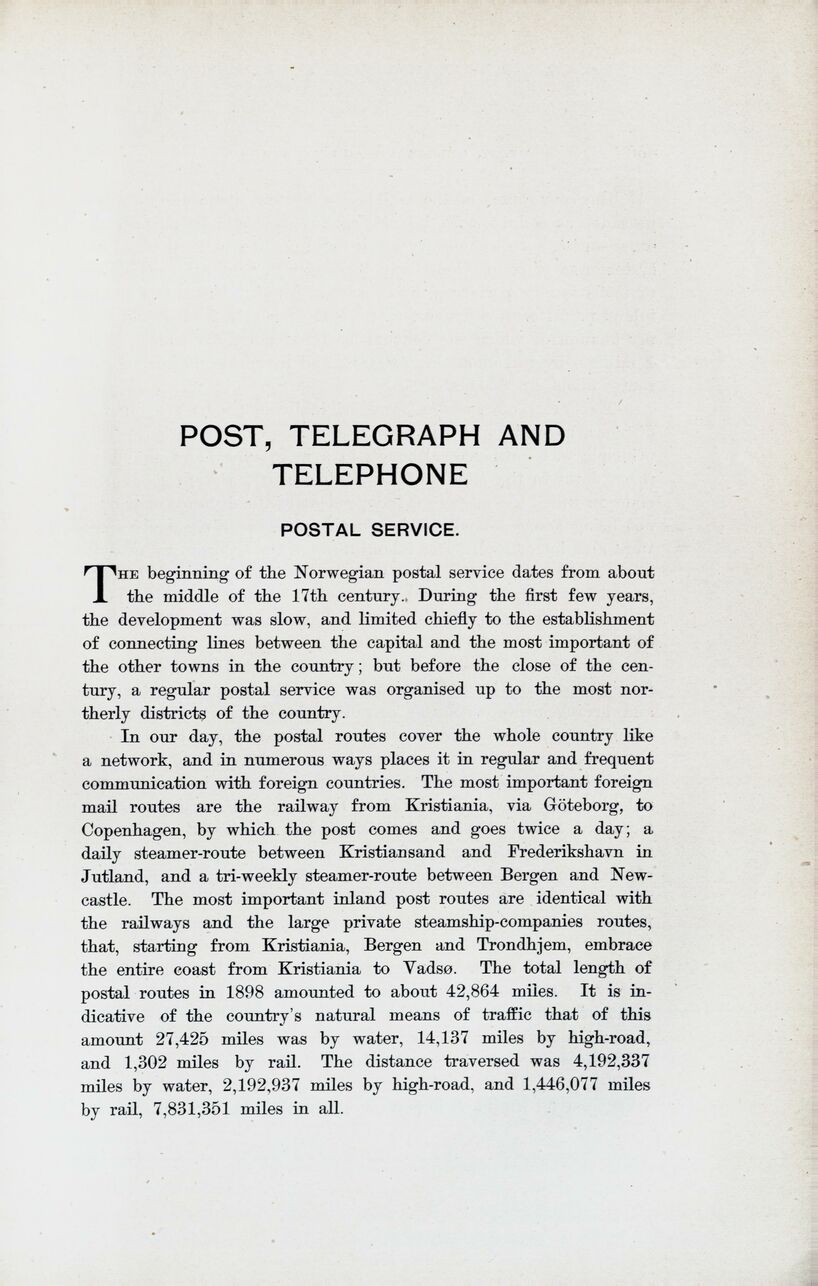
Full resolution (JPEG)
- On this page / på denna sida
- Post, Telegraph and Telephone, by Bernh. Andersen, Andr. M. Hansen and J. T. Sommerschild

<< prev. page << föreg. sida << >> nästa sida >> next page >>
Below is the raw OCR text
from the above scanned image.
Do you see an error? Proofread the page now!
Här nedan syns maskintolkade texten från faksimilbilden ovan.
Ser du något fel? Korrekturläs sidan nu!
This page has been proofread at least once.
(diff)
(history)
Denna sida har korrekturlästs minst en gång.
(skillnad)
(historik)
POST, TELEGRAPH AND
TELEPHONE
POSTAL SERVICE.
The beginning of the Norwegian postal service dates from about
the middle of the 17th century. During the first few years,
the development was slow, and limited chiefly to the establishment
of connecting lines between the capital and the most important of
the other towns in the country; but before the close of the
century, a regular postal service was organised up to the most
northerly districts of the country.
In our day, the postal routes cover the whole country like
a network, and in numerous ways places it in regular and frequent
communication with foreign countries. The most important foreign
mail routes are the railway from Kristiania, via Göteborg, to
Copenhagen, by which the post comes and goes twice a day; a
daily steamer-route between Kristiansand and Frederikshavn in
Jutland, and a tri-weekly steamer-route between Bergen and
Newcastle. The most important inland post routes are identical with
the railways and the large private steamship-companies routes,
that, starting from Kristiania, Bergen and Trondhjem, embrace
the entire coast from Kristiania to Vadsø. The total length of
postal routes in 1898 amounted to about 42,864 miles. It is
indicative of the country’s natural means of traffic that of this
amount 27,425 miles was by water. 14,137 miles by high-road,
and 1,302 miles by rail. The distance traversed was 4,192,337
miles by water, 2,192,937 miles by high-road, and 1,446,077 miles
by rail, 7,831,351 miles in all.
<< prev. page << föreg. sida << >> nästa sida >> next page >>
Project Runeberg, Sun Dec 10 21:09:24 2023
(aronsson)
(diff)
(history)
(download)
<< Previous
Next >>
https://runeberg.org/norparis/0481.html



